Dahlias are bright, flowery plants. Some are tuberous-rooted perennials. Other are seed-grown annuals.
Dahlias are grown for their colorful flower heads in a variety of forms, colors, and patterns. Leaves are pinnate and divided into oval leaflets with toothed margins and rounded tips.
Short small-flowered dahlias are often used as bedding annuals. Tall, large-flowered dahlias can be grown as specimens or massed in large groups or bands in borders. Both annual and perennial dahlias make good cutting flowers.
Garden Success Products at Amazon:
- 10 pcs Stainless Steel Garden Hand Tool Set
- Flexi Hose with 8-inch Nozzle
- Gorilla Cart 4 Cu. Ft, 300-pound Capacity
- Neem Bliss 100-% Cold Pressed Neem Oil
- Safer Brand Insect Killing Soap
- Wildflower Seed Mix Attracts Hummingbirds and Butterflies
- Eden Brothers All Perennial Seed Mix
Dahlias flower from midsummer to the first frost. They are relatively easy to grow from tubers or seeds. Tuberous dahlias are winter hardy in Zones 9 to 11; in colder zones, they are best dug up after the first frost and stored in a warm place over the winter.
Dahlias are a genus of about 30 species and more than 30,000 cultivars of bushy, often tuberous-rooted perennials from mountainous areas of Central America.
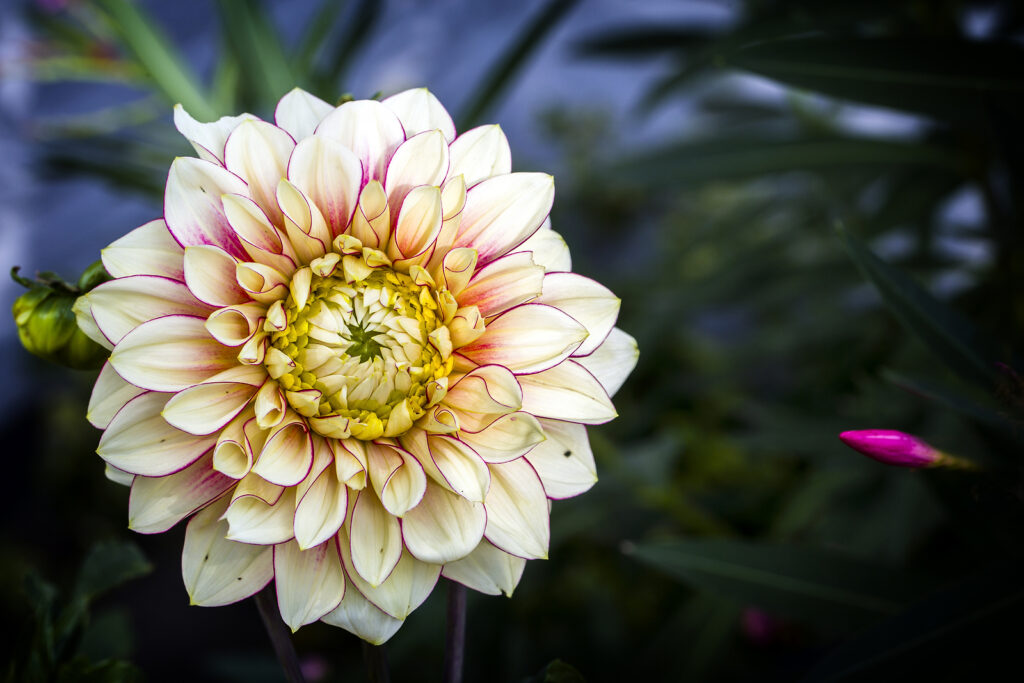
Get to know Dahlia
- Plant type: Tender perennial; summer and fall-blooming bulb
- Growing Zones and range: 2-11; perennial in Zones 8-11; annual in colder regions; dig up roots in Zone 8 and colder and store inside over the winter
- Hardiness: Half-hardy; plants are killed if tuberous roots freeze
- Height and width: 8 inches (20cm) to nearly 7 feet (2.1m) tall, 8 inches (20cm) to 3 feet (.9m) wide
- Foliage: Foliage is dark green or bronze; oval leaflets with toothed margins and rounded tips.
- Flowers: Several flower forms: spiky-petaled cactus types, daisy-like singles, puffy-centered anemones, globe-shaped balls, and pom-pom types; single flowers have a disc and ray form; doubles form round heads that can be quilled, pompon shaped or peony flower shaped; flower sizes range from 2 to 10 inches (5-25cm) wide.
- Flower colors: Yellow, orange, red, pink, white, deep rose, violet, or purple, and many bicolors.
- Bloom time: Summer into autumn; can bloom year-round in frost-free regions
- Uses: Beds, borders, cut flower
- Common name: Dahlia
- Botanical name: Dahlia spp.
- Family: Asteraceae
- Origin: Central America
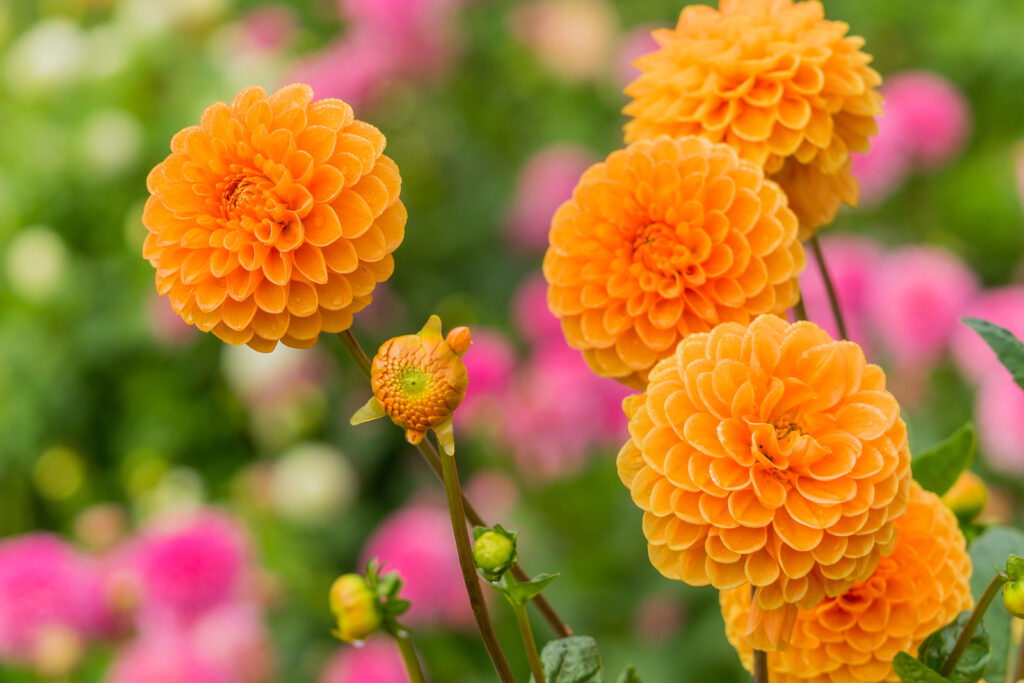
Where to plant Dahlia
- Plant dahlias in full sun. In Zones 8-11, dahlias do best in light shade mid-day.
- Protect dahlias from harsh temperatures and wind.
- Grow dahlias in humus-rich, well-drained soil.
- Dahlias prefer a soil pH of 6 to 7.
Dahlia uses
- Dahlias are showy in a mixed border.
- Dahlias are effective with massed together.
- They provide almost matched garden colors from midsummer through autumn.
- Dahlias are good cut flowers; cut flowers will last longer if the cut stem ends are dipped into boiling water.
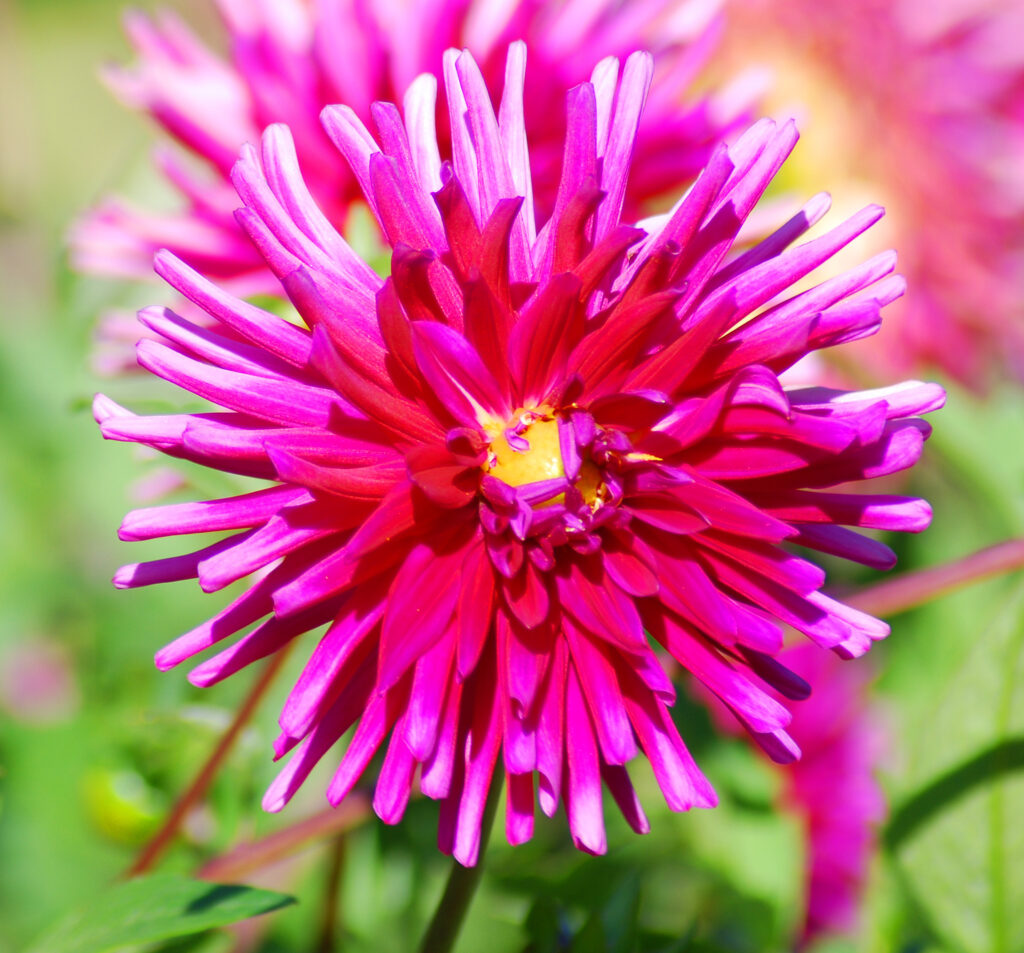
When to plant Dahlia
- Sow seed or set dahlia tubers in the garden in spring after all danger of frost has passed.
- Start seed indoors 8 weeks before the last frost.
- Start tuberous roots indoors about 4 weeks before the last frost in spring.
- Set plants or tuberous roots outdoors in permanent places after the danger of frost has passed.
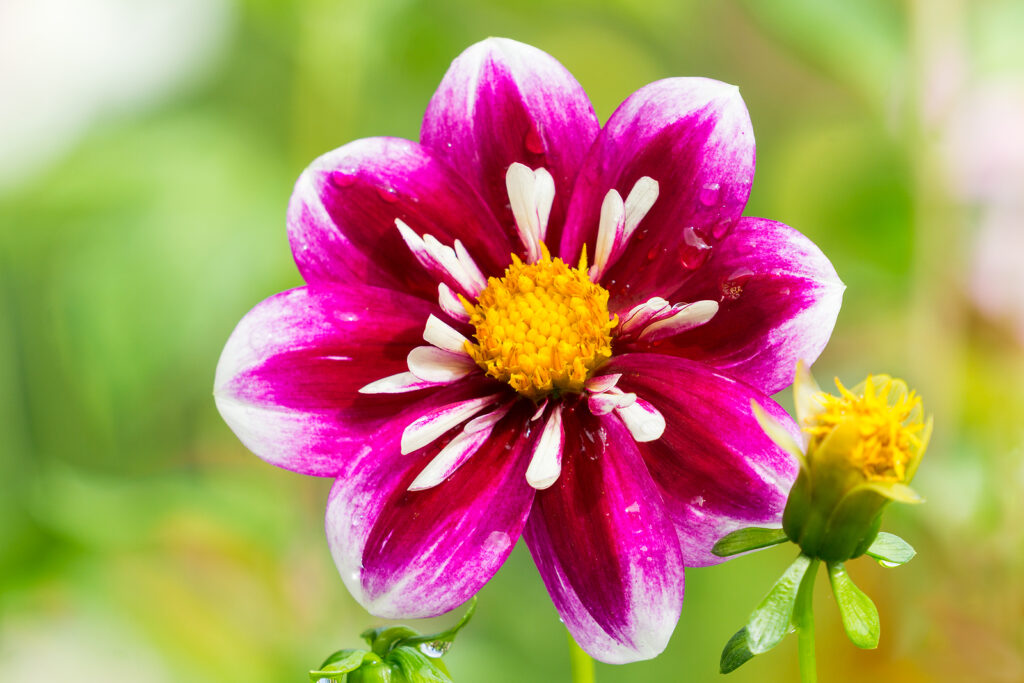
Planting and spacing Dahlia
- Start seed indoors in flats or six-packs filled with clean seed starting medium.
- Cover seeds with 1/8 inch of soil; keep at 65° to 75°F (18°-24°C); seeds germinate in about 7 to 14 days.
- Grow seedlings in bright sunlight or a few inches below a fluorescent light; harden off seedlings before setting them outdoors.
- Start tuberous roots indoors with the crown up slightly above the soil; start roots in 4 to 6-inch pots depending on the size of the root. Fill containers with a mixture of compost, peat, and sand slightly moist.
- Prepare soil outdoors by adding aged compost, manure, and fertilizer and turning it under 6 or more inches.
- Sow seed outdoors in smoothly prepared beds; cover the seed with 1/4 inch of soil; plant seed 1 inch (2.5cm) apart.
- Set plants or tuberous roots outdoors in their permanent place after all danger of first has passed.
- Set dahlias 8 inches (20cm)to 3 feet (.9m) apart depending on the variety.
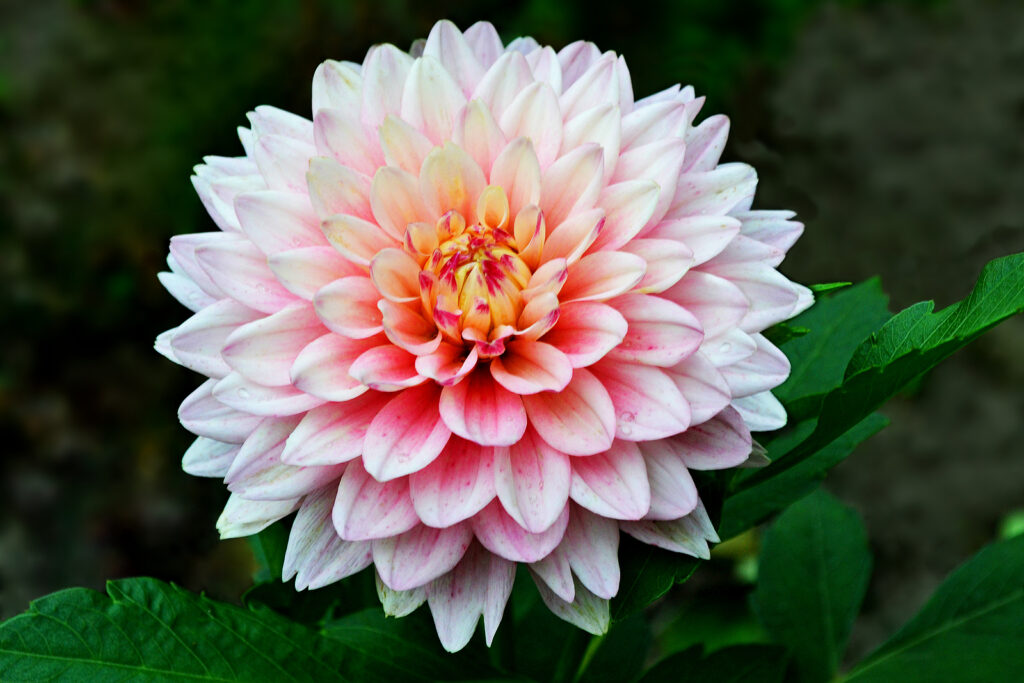
How to water and feed Dahlia
- Dahlias need ample moisture; keep the soil evenly moist.
- Fertilize dahlias with a low nitrogen fertilizer every 6 weeks; use a liquid fertilizer when the weather is hot.
- Mulch dahlias with 2 to 3 inches (5-7.6cm) of aged compost or chopped leaves to conserve soil moisture.
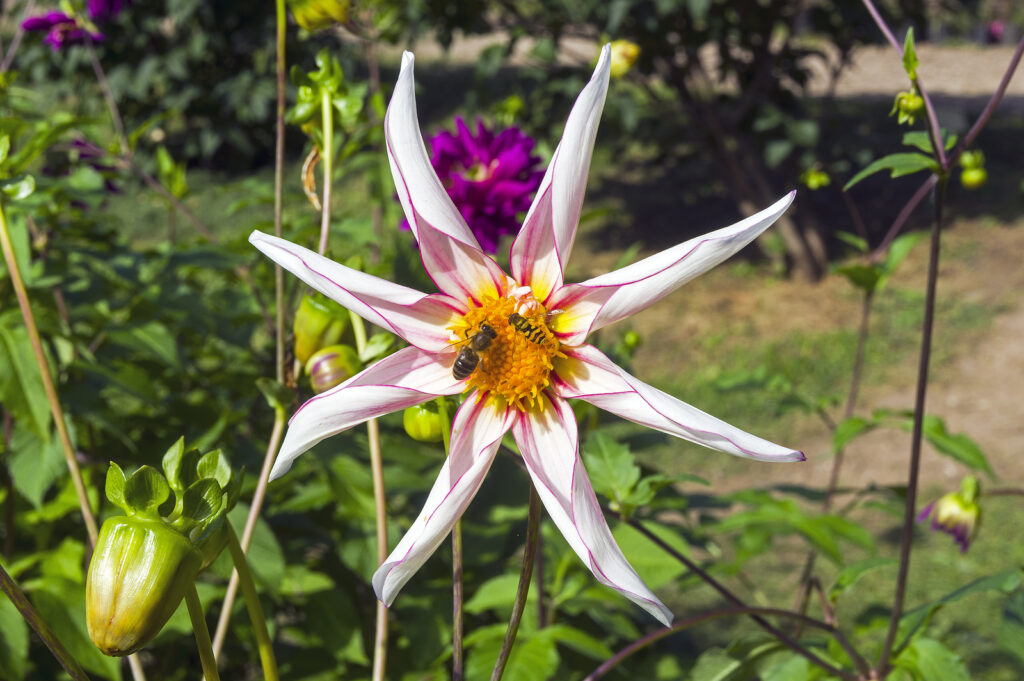
Dahlia care
- After the first three sets of leaves have developed, pinch the tip of the shoots. A few weeks later, pinch the shoots a second time.
- Stake dahlias at planting time to avoid damaging roots later. Tall cultivars will become top-heavy and should be staked to avoid toppling; use 4- to 6-foot-tall wooden stakes set deeply. Short cultivars will not need stakes.
- Pinch back tips before the first buds appear to promote business.
- Remove spent blooms or cut fresh flowers to extend the bloom period.
- Disbud by pinching side buds off central bloom stalks if larger flowers are wanted.
- In Zones 2-7, in fall, after the first frost, lift and store tubers in a dry space that stays about 40°F/4°C.
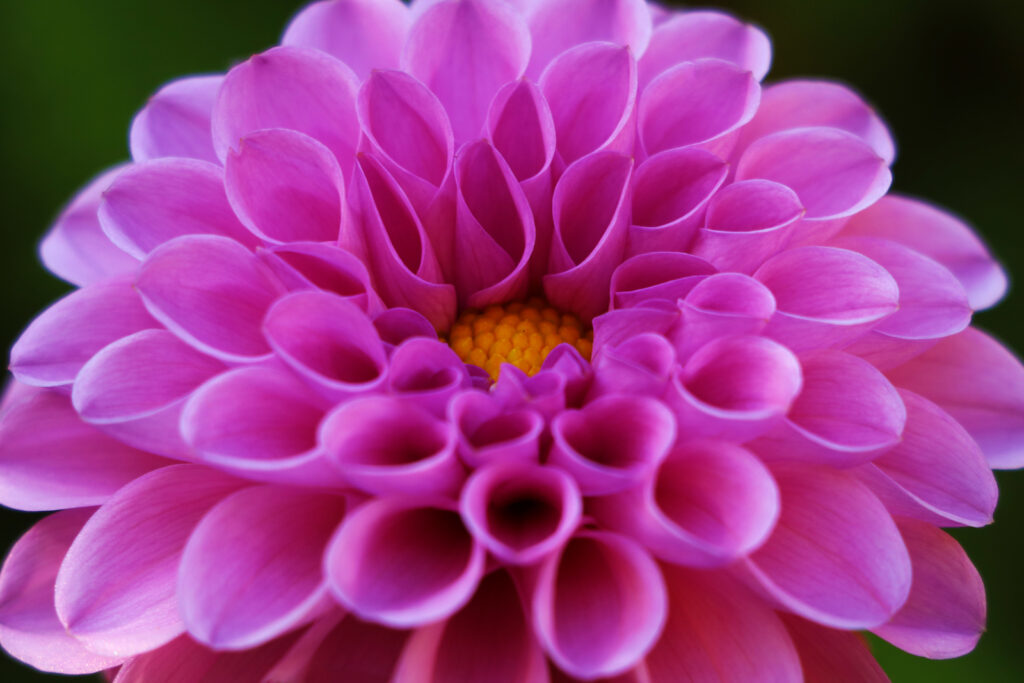
Dahlia pests and diseases
- Aphids, spider mites, caterpillars, earwigs, thrips, and slugs can be troublesome.
- Dahlias are prone to powdery mildew, fungal leaf spots, and blossom blights.
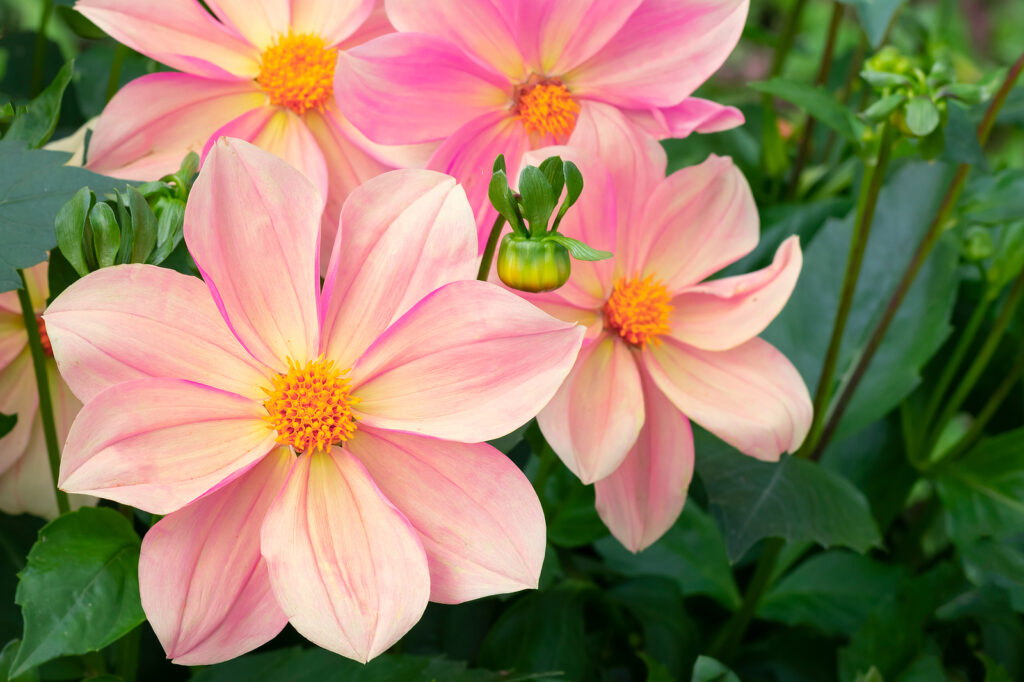
Dahlia propagation
- In spring, divide clumps and then replant, including part of the old stem in the division.
- Seeds germinate in 10 to 20 days at 70° to 75°F (21°-24°C).
- Tubers can be dug and stored over the winter. It is best to replace dwarf dahlias each year
- Take basal shoot cutting from tubers in early spring. Take basal shoots when they are 3 inches (7.6cm) long; cover all but the growing tip with a moist rooting medium.
- Divide clumps into two or more pieces each with a shoot. Clumps of tuberous roots can be divided into half or thirds. After the eyes at the base of the old stem begin to swell slice down through the stem and between the roots. There should be one eye for each division. Treat cuts with fungicide before planting.
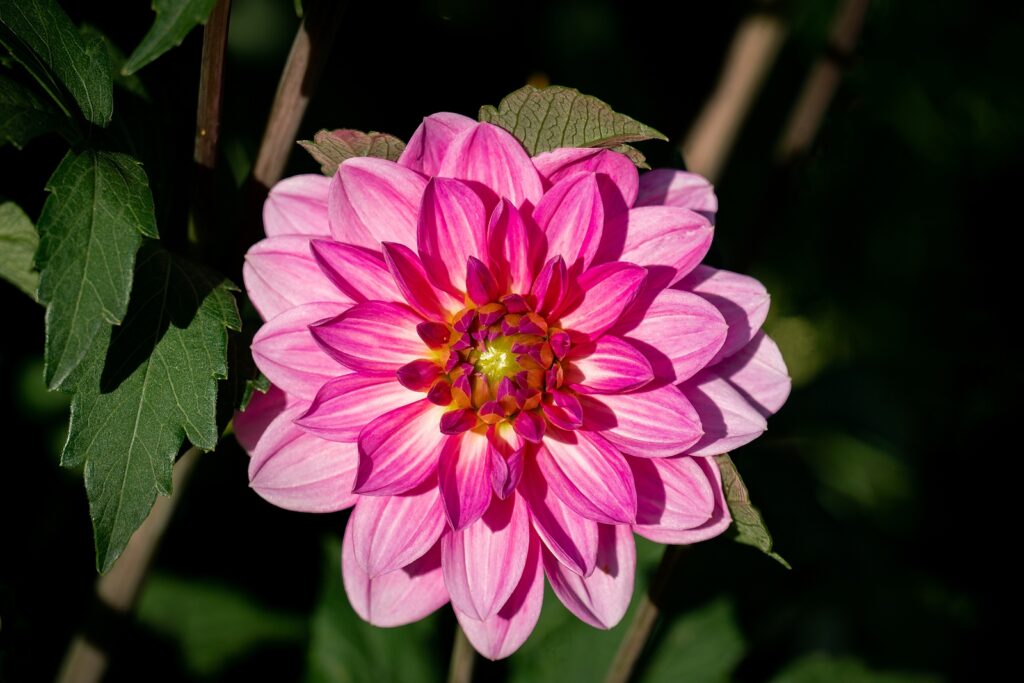
Dahlia winter protection
- Protect dahlias in winter by storing the tuberous roots in Zone 8 and colder.
- Dig up clumps of tubers after the first frost. Wash away the soil and let dry for a few days.
- Dust roots with fungicide and place them in a plastic bag with slightly moist potting soil. Label the bag.
- Punch ventilation holes in the storage bags and store bags in a cool, dark place for the winter; do not store roots where they can freeze.
- Check roots occasionally to be sure they do not rot or become dedicated; throw away rotted or dedicated roots; they will not be viable.
- In Zones 9-11, protect tuberous roots from frost under 2 to 4 inches (5-10cm) of mulch; roots can remain in the ground all year. Remove mulch gradually as growth begins in spring.
Dahlia types
Dahlias come in a variety of shapes, sizes, and heights. Dahlia enthusiasts classify dahlias by their differing flower shapes. Below are some of the most popular flower classifications:
- Anemone: fully double flowers comprise one or more rings of flatted petals overlaid with shorter tubular petals presenting a pincushion appearance.
- Ball: fully double spherical ball-shaped flowers, sometimes flattened on top are formed of small densely packed tubular flowers.
- Cactus: fully double blooms are formed of narrow pointed petals that can be straight or curved inward giving a shaggy effect.
- Collarette: flowerheads composed of a single row of ray florets around an inner ring of short florets forming a collar around the disk.
- Decorative: have fully double-ruffled flowers composed of broad ray petals.
- Orchid: flowerhead composed of a single row of ray florets around the disk.
- Pompon: miniature forms of ball dahlias but more spherical with fully double tubular petals.
- Single: flowers have a daisy-like appearance with a central disk surrounded by oval petals.
- Water Lily: fully double blooms are comprised of flat or slightly curved petals and resemble water lilies.
Dahlias frequently asked questions
Q: Can dahlias be grown from seed?
A: Yes. You can grow dwarf bedding dahlias from seed. Try the All-American winter Redskin and Sunny, Dahl Face, Figaro, and Rigoletto. Start seeds indoors four to six weeks before the last frost. Young plants can be moved outside a week or so after the last frost.
Q: How do I grow dahlias from tubers?
A: Dahlia tubers can be started indoors four to six weeks before the last frost, or they can be planted directly in the garden after all danger of frost has passed. If you are growing tall varieties, put stakes in place at planting time.
Q: What care do dahlias require?
A: Grow dahlias in full sun or light shade. Grow dahlias in humus-rich, well-drained soil. Keep the soil evenly moist; do not let the soil dry out. In summer, mulch keeps the soil from losing moisture. Remove flowers when they fade. If you are growing dahlias for cutting, remove all buds except for the one on the central stem so that the plant puts all of its energy into the flower that will bloom and be cut.
Q: How do I store dahlia tubers over winter?
A: When dahlia tops die back or blacken, dig them and allow them to dry before storing them in a cool, dry, dark place that is frost-free. Store them in a box or plastic bag with dry peat moss. Check the tubers in winter to be sure they are not drying out and shrinking. If growth begins, they are getting too much light or heat.



